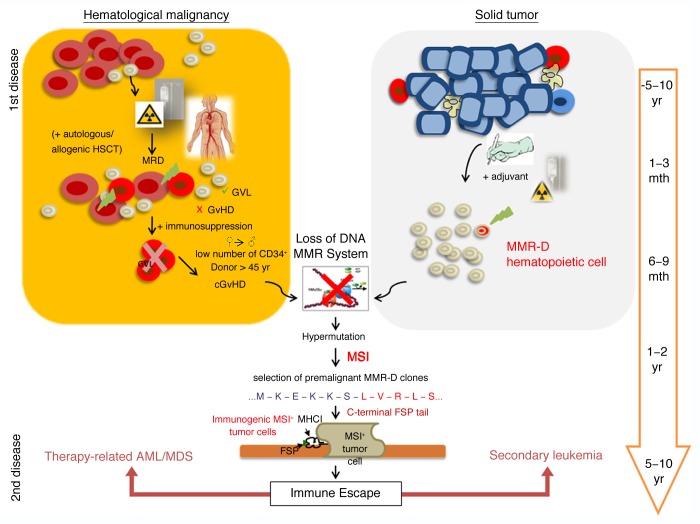Figure 1. Potential development of mismatch repair-deficient secondary leukemia and therapy-related acute myeloid leukemia/myelodysplastic syndrome. Mismatch repair-deficient (MMR-D) hematopoietic cells are regularly primed and selected for by the therapeutic regimens employed against primary hematological and solid neoplasms. Patients affected by hematological disorders often receive stem cell transplantation in addition to chemo- and radiotherapy. In this setting, most residual leukemic cells (minimal residual disease, MRD) may be eliminated due to the graft-vs.-leukemia (GVL) effect. However, immunosuppression counteracts this process and, especially in cooperation with severe graft-vs.-host-disease (GvHD) reactions, drives the development of MMR-D leukemic clones. The treatment of hematological and solid cancer patients with alkylating agents may induce and select for MMR-D hematopoietic cells that display an intrinsically elevated mutational rate, preferentially affecting MSI target genes. Insertion and deletion mutations result in the production of truncated polypeptides, proteins with altered function as well as highly immunogenic frameshift peptide tails. Hence MSI+ cancer cells suffer from an increased immunological pressure and must acquire escape mechanisms. If successful, these cells will drive the emergence of clinically overt secondary leukemia or therapy-related MSI+ acute myeloid leukemia/myelodysplastic syndrome (AML/MDS).

An official website of the United States government
Here's how you know
Official websites use .gov
A
.gov website belongs to an official
government organization in the United States.
Secure .gov websites use HTTPS
A lock (
) or https:// means you've safely
connected to the .gov website. Share sensitive
information only on official, secure websites.
